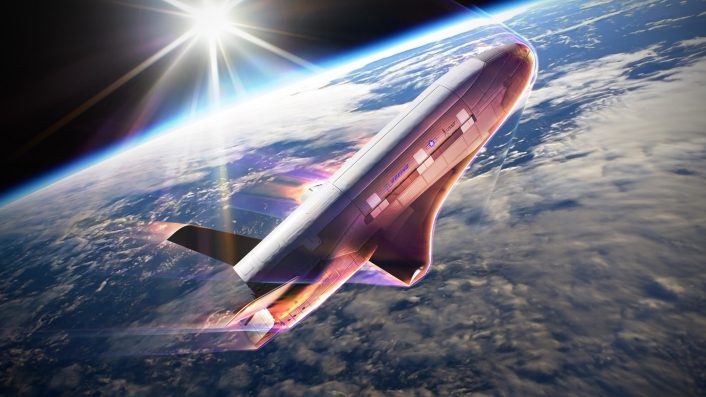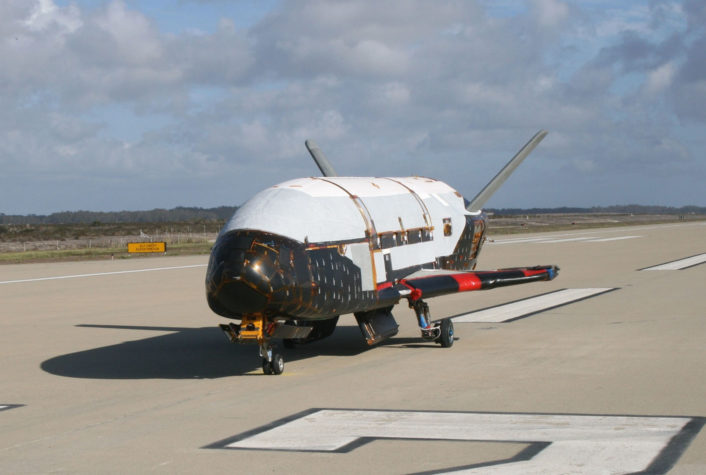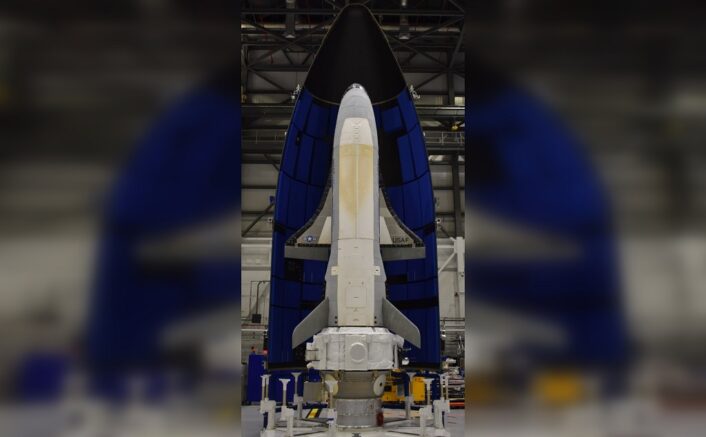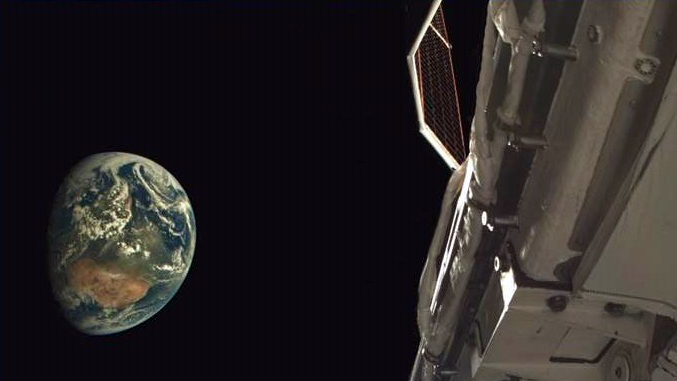The photo, taken during the X-37B’s seventh mission, shows Earth from High-Elliptical Orbit.
On Feb. 20, 2025, the Secretary of the Air Force Public Affairs uploaded on the DVIDS website, what is believed to be the first-ever in-orbit officially released photo taken by the X-37B Orbital Test Vehicle (OTV). The photo (purposely posted in low-resolution and apparently somehow digitally altered) showing Earth from space, was captured by an onboard camera used to monitor the spacecraft’s health.
Earlier today, the U.S. Space Force quietly released the first ever in-orbit photo from Boeing’s X-37, a highly secretive reusable robotic spacecraft fielded by the DOD.
The image, taken on the X-37B’s seventh mission, high over the African continent, shows the blue marble. pic.twitter.com/lHIiZIFmh3
— OSINTtechnical (@Osinttechnical) February 21, 2025
While the one released on Feb. 20, 2025 is the first officially released photo (hence remarkable, despite the lack of significant details), a short two-second clip, possibly released by accident, previously surfaced showing the X-37B deploying from a Falcon 9 rocket.
Boeing has released some deployment footage of the X-37, though until today, images from the spacecraft have remained completely elusive. https://t.co/dwXQpwIl3t
— OSINTtechnical (@Osinttechnical) February 21, 2025
Very little information has been released along with the latest photo, whose caption reads: “An X-37B onboard camera, used to ensure the health and safety of the vehicle, captures an image of Earth while conducting experiments in a highly elliptical orbit in 2024. As part of the X-37B’s seventh mission, the vehicle executed a series of first-of-its-kind maneuvers, called aerobraking, to safely change its orbit using minimal fuel.”
Space Force confirmed that as part of OTV-7, the X-37B had performed a series of aerobraking maneuvers, a controlled way of using atmospheric drag to change orbit without burning excessive fuel.
This move is a big first for the Space Force. Secretary of the Air Force Frank Kendall described it as “a novel and efficient series of maneuvers” demonstrating the service’s commitment to innovation in space operations. Chief of Space Operations Gen. Chance Saltzman echoed the sentiment, calling it a major milestone in expanding the U.S. military’s capabilities in orbit.
Aerobraking, commonly used in lunar and Mars missions, is now being tested for the first time by the X-37B, leveraging knowledge gained from decades of planetary exploration. Once these maneuvers are complete, the spaceplane will continue its mission objectives before eventually returning to Earth, just as it has on six previous missions.

The X-37B Orbital Test Vehicle is the U.S. Space Force’s secretive, unmanned spaceplane, designed to test new technologies and push the boundaries of reusable spacecraft. Originally developed by NASA and later handed over to the military, the X-37B has spent years quietly conducting classified missions, fueling speculation about its real purpose.
At its core, the X-37B is about two things: advancing reusable spacecraft tech and conducting experiments that can be brought back to Earth for analysis. The spaceplane is launched vertically on a rocket, spends months (or years) in orbit, and then lands like a conventional aircraft. Over the years, it has tested everything from advanced thermal protection systems to autonomous flight controls and even potential new propulsion methods.
The program dates back to 1999, when the Air Force began working with NASA on what was then just the X-37. In 2004, the project was transferred to DARPA, which completed flight tests with a smaller, scaled-down version called the X-40A. NASA’s original vision for an X-37 Orbital Vehicle never materialized, but its design served as the foundation for what eventually became the Air Force’s X-37B.

Right now, there are two operational X-37B spaceplanes and a single X-37A. The last mission, OTV-6, spent a record-breaking 908 days in orbit, surpassing the previous 780-day record from OTV-5. It was also the first to fly with a service module, an addition that expanded its ability to carry experiments. After landing, the module was disposed of in accordance with best practices—a phrase that, given the classified nature of the program, leaves plenty of room for interpretation.
The current mission, OTV-7, is the fourth flight for the second X-37B, and it launched on Dec. 28, 2023 aboard a Falcon Heavy—a first for the program. Unlike previous launches on the Atlas V and Falcon 9, the heavier-lift Falcon Heavy allows the X-37B to reach much higher orbits. While the official mission involves radiation experiments and Space Domain Awareness tests, the highly elliptical orbit and secretive nature of the program continue to fuel speculation.
Adding to the intrigue, SpaceX did not provide any footage of the second stage after launch, keeping key details under wraps. The Space Force has admitted that OTV-7 is exploring new orbital regimes, with hints that the spaceplane might even be testing operations beyond geostationary orbit (22,236 miles above Earth); a significant departure from previous flights.










